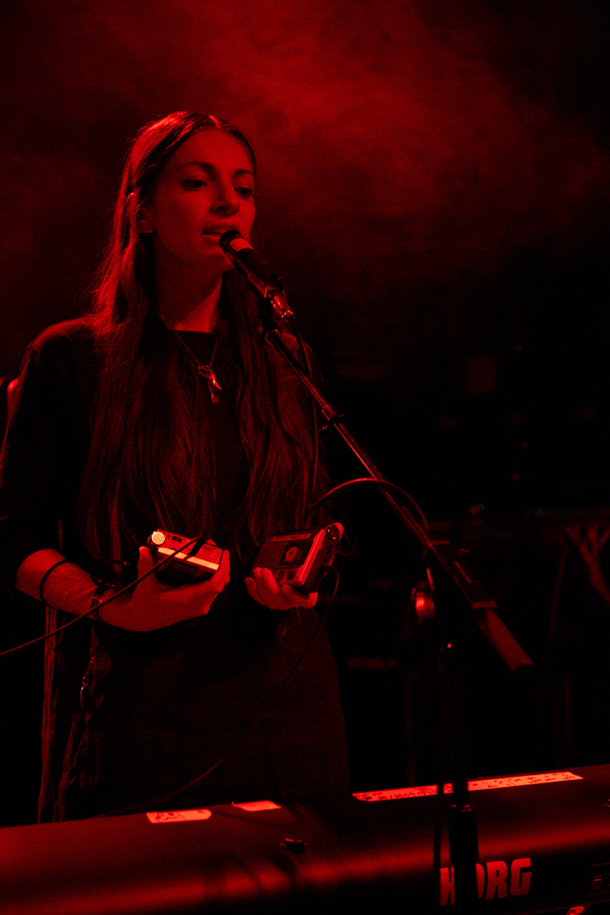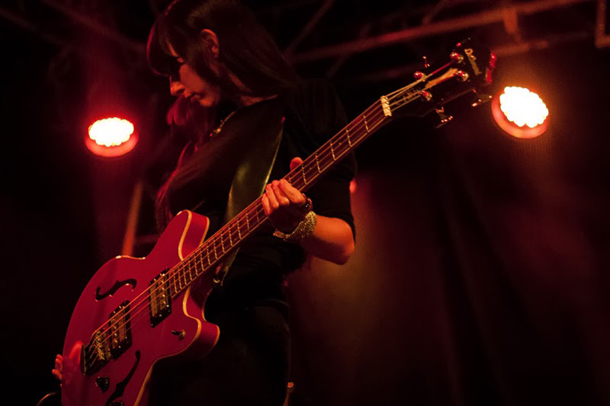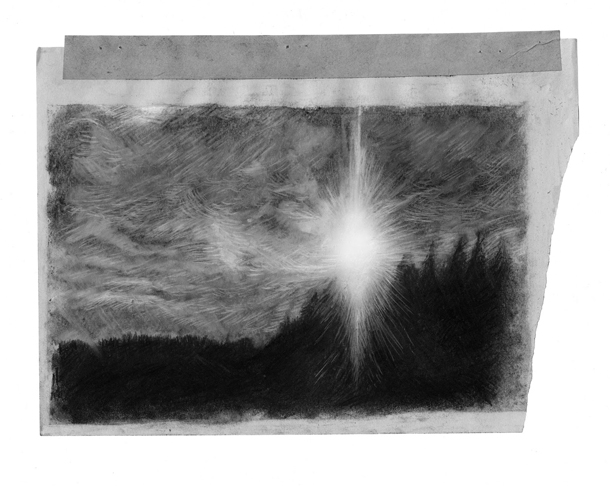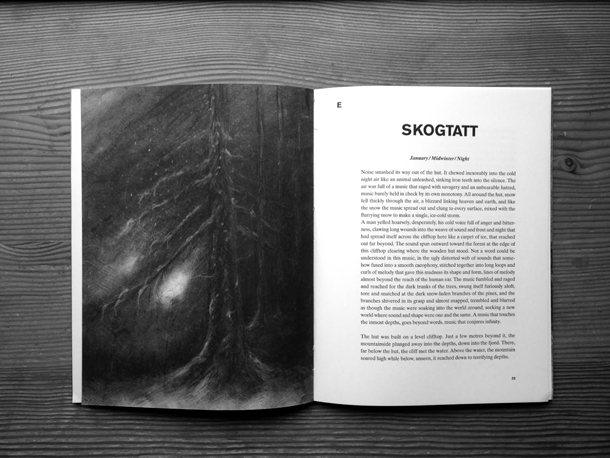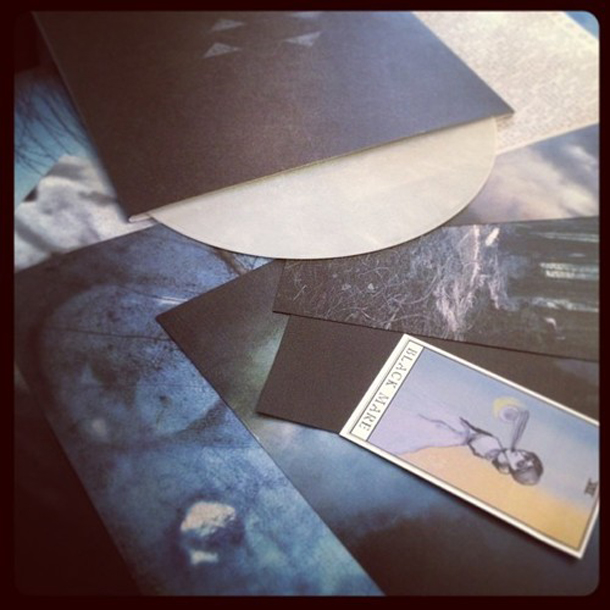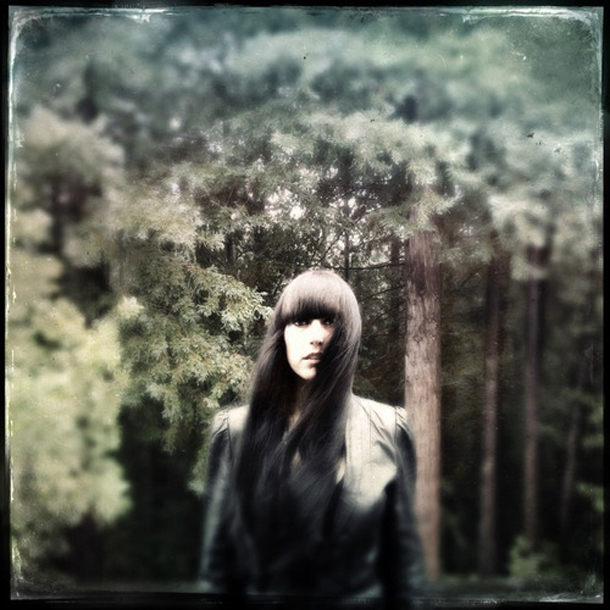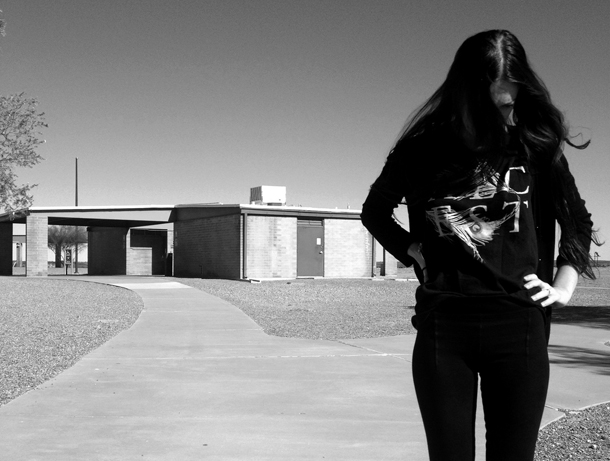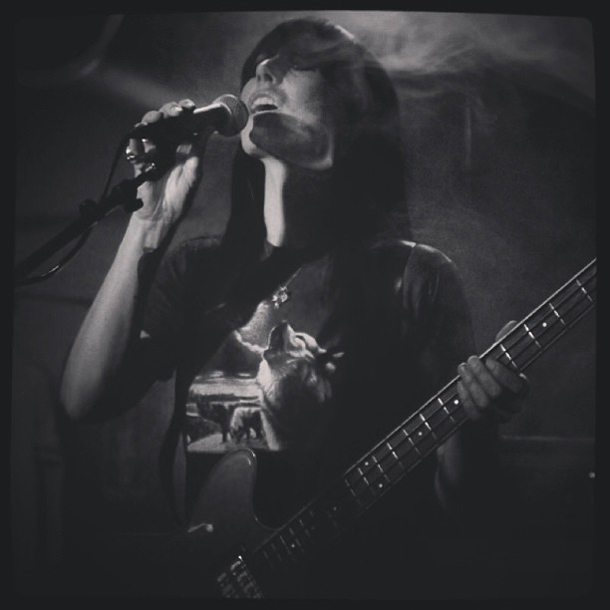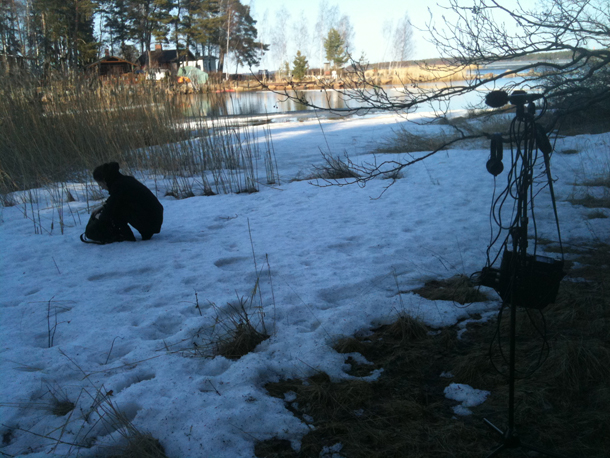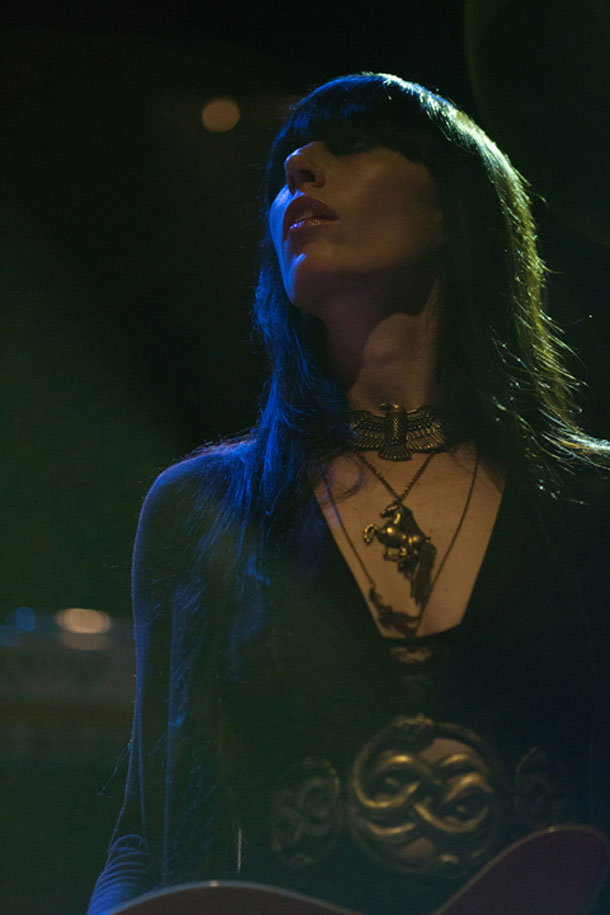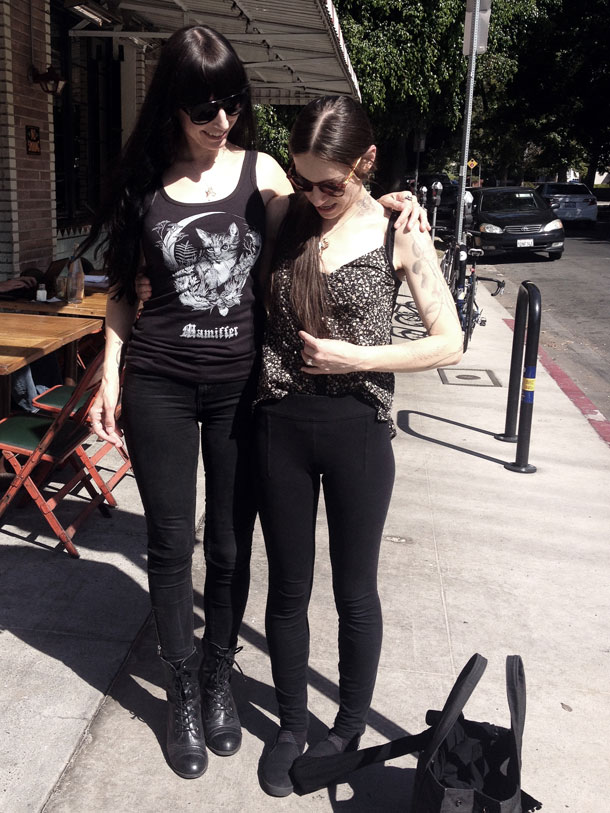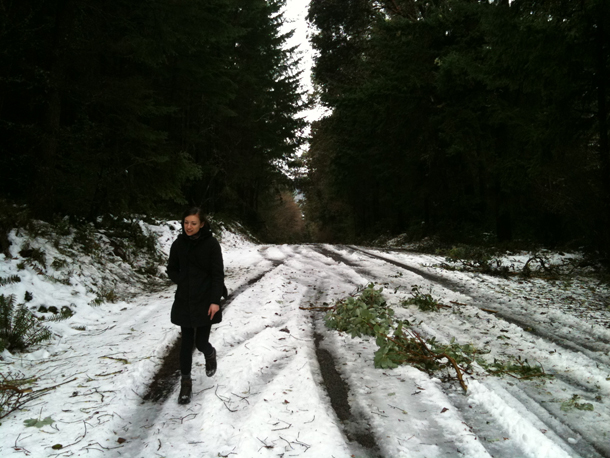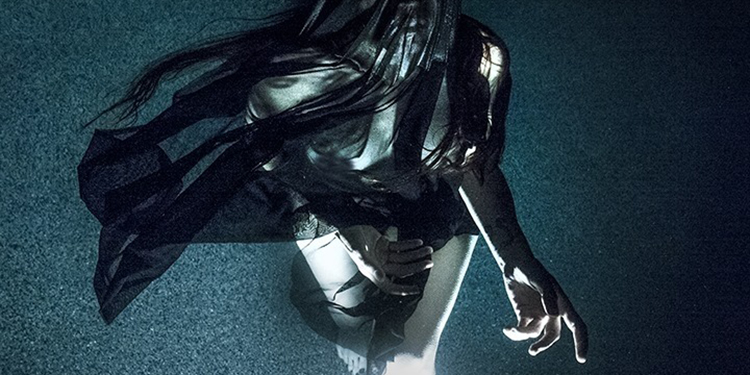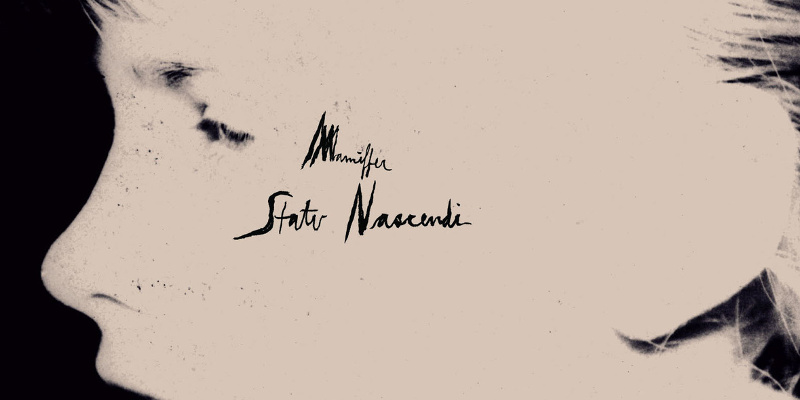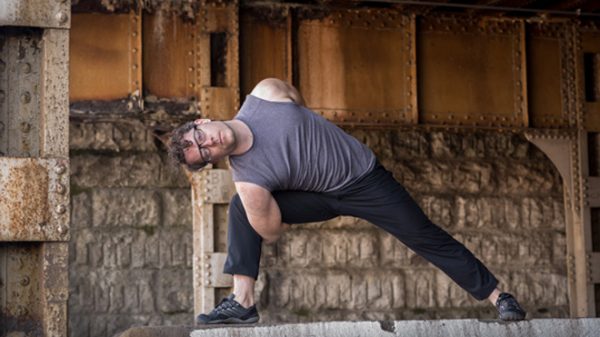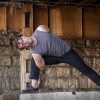Interview by Francesca Marongiu
In this first chapter I arranged a chat between Faith Coloccia (Mamiffer, Everlovely Lightningheart, Sige Records) and Sera Timms (Ides Of Gemini, Black Mare, Black Math Horseman).
They’ll talk about sympathetic magic, pipe organs, tarot, goddesses, archetypes, Randal Dunn, Aaron Turner, sisterhood, weather machines, I Ching, canyons, Vashon Island, black eyed peas, Circle, solstices, Finland, Death Valley and much more.
In the last few years, a small cult has grown around Faith Coloccia thanks to her musical project Mamiffer (along with her husband Aaron Turner) and to her work as a photographer/painter, visible in the stunning Sige Records artworks, a label she found with Aaron in 2009.
Sera Timms is well-known for several mesmerizing projects, a mix of metal, new-wave and dream pop (Black Math Horseman, Ides Of Gemini and the recent Black Mare) and her skills as a video director/photographer (she worked with Isis and RM74 among others).
Both having grown up in Los Angeles, they represent the female, spiritual side of a movement which is too branched to be defined that way but which has for sure contributed to feed that fascination for metal, shoegaze, dreampop, chamber music and new wave which partly characterizes much of the sonic flow of the West Coast in the last years.
The last time they met was during an Ides Of Gemini day-off near Seattle. That time Sera and J have been Faith and Aaron’s guests in their home on the Vashon Island, this is what emerged from a late night chat while outside the last blurs of the North West snow were melting.
Francesca: Hi Faith, hi Sera, let’s start from the first “mirror stage”, how do you know each other? (Let’s pretend I’m invisible for a while, I’ll hide myself behind the mirror to help!).
Sera: Ok! I believe we first met through Aaron when you two came to a Black Math Horseman show at Safari Sam’s. I had not met you but knew who you were because I was a fan of Everlovely Lightningheart. That was BMH’s third show ever, and I was still very nervous and insecure about performing, and my whole pedal board including my vocal effects pedal were not working. Being a fan of your music (and Aaron’s!), knowing you two were out there made this an especially nerve racking performance on top of things not working…haha.
Faith: I barely remember that! I was also very nervous, it was me and Aaron’s fourth date or something, and I only knew a couple people there. Your show was overshadowed by my anxiety and sweating, so I do not remember your pedals not working! I know when I met you I thought you were very striking and beautiful and a kind person and I still do! Maybe that was the beginnings of a “sisterhood” for us.
Our friendship seemed to take shape through writing to each other about our dreams in emails. And our friendship was certainly strengthened when going on tour together in Europe (Mamiffer and BMH). I remember having to sleep in one large dirty bed together (you and J and me and Aaron) in Germany, and all of our band members getting locked outside at 3 am and breaking in a door!
Sera: I agree that our initial impressions of one another were the beginning of a sisterhood. At that time I did not have any sisters in music…only many brothers! We’ve discussed this idea of sisterhood, and how important it is to support and collaborate with each other, rather than compete with one another. I was honored to be asked, and be able to sing on your last record, and I think that strengthened our sisterhood, as well as all of our dream exchanges, divination’s, and many cups of coffee over the years. And yes, sharing the giant dirty bed in Germany was a true test of our burgeoning friendship!
Faith: Yes, it is essential to my practice to foster sisterhood, to work with women, and to help change misconceptions of women in music and art as being competitive with each other and hierarchal. I hope that we can help empower our friends, and create our own world, like we have talked about, and nature seems essential to this process. I believe that we were drawn to each other as friends, through our mutual love of nature and incorporation of that into our music and art.
I have a memory from that tour where you and J got up early just so you could hike in a German forest, and I was so happy that you would take the time to do that!
And I found out you love cats and I love cats!
Francesca: Speaking of which, how this symbiotic connection with nature was born? How’s it related to your spirituality?
Faith: The seed planted in my childhood was related to growing up in the desert, where it rained one month out of the year. I longed for rain, and to see things grow. I was an astute observer and participator in my environment, and thought I could talk to plants and intuit how to work with phenomena. I wished for rain so much that I decided to make “weather machines”, which were really simple forms of sympathetic magic. I would construct sticks with leaves, tied with grass and flowers and designate events to the plant parts (“this leaf means there will be thunder”). The “machines” would always work. I told my friend at school this in the third grade, and she did not believe me. She dared me to make it rain in the middle of summer. That night I constructed my sympathetic magic machine, and the next day it rained!
So I have carried this living/collaborative relationship with nature for my whole life. It inspires so much of what I make and do. It inspires where to live, when to tour, and when to record.
I became interested in goddess cultures, of digging into the earth, into collective inherited memories, and neolithic ways of life. These interests resulted in a major “natural” event that took place within my own body, I became the carrier of life and death. This event completely changed my life and the music and art I am making now, resulting in a more informed and different “modus operandi”.
Sera: We both live in or near large cities, but in secluded natural landscapes. I know that for me nature is a voice, and a guide, and nature will speak to you like your own inner voice if you listen.
I have an odd connection to music and the desert in particular as well. I don’t usually share this because our musical community tends to be rather judgmental of pop music, but I grew up very musically sheltered, and I remember hearing “I Still Haven’t Found What I’m Looking For”, and seeing the striking desert imagery on the cover. My interpretation of that album at the time was that “God” was nowhere to be found despite ones efforts, and this is also how I felt at the time. In church I would watch people singing the hymns, and they did not look or seem to feel like they were really interacting with God. Shortly thereafter, my mom married a man who loved the desert, and so we began taking trips to Death Valley one or two times a year, and I would bring this album as my soundtrack, and we would always drive forever through desert canyons, gigantic valley’s, salt flats and ghost towns, and with this album on through my headphones I felt the desert as a holy land. And in retrospect, I think this comes from a sense of the vast space in the desert landscape, and the wind begins to speak, and the tiny desert flowers show us our vulnerability, and the stones our integrity, and then the self merges into the place, and the place into the self, and that is where divinity is found.
I actually grew up in the forest though, and in my solo music, it sounds to me like I am always trying to recreate the feeling that I have when I’m in the forest, which is full of statuesque nobility, shadows and scattered light, and the hidden and unknown treasures of nature, as well as the dangers. Because I grew up in a fairly small rural area full of hippies and mystics (and hicks) I completely resisted anything remotely similar, like tarot, astrology, and goddess culture. I was quite determined to form my world through my intellect, which was a very futile and cold way to live, and a difficult but necessary learning experience. It’s interesting that you learned your power of creation and destruction by unknowingly creating these realities within your own body, and I learned mine by somewhat ignorantly trying to create music and a band largely through my intellect and my ego, and having all of my glorious band creation (with Black Math Horseman) come crumbling down. But, like you I look back on my lyrics and the whole story, including the destruction is written in there. I’ve of course become far more careful with my lyrics now!
Our music is our own weather machine.
Francesca: I strongly agree with the statement “be careful what you say”, eheh. I was wondering if you have ever deepen the idea of the “power of statements”, translating it in some kind of practice. Did you?
Faith: Yes, I feel as if I learned how to be careful with how powerful words can be. “Writing yourself into the world” is very true. I can harness this power a lot more consciously now. Even speaking words out loud as statements is a very powerful act, it has helped me be so much more confident as a singer which I was somewhat reluctant to become. I notice as I can harness the power of words and as I practice speaking my truth, I have been able to deal with stage fright, and it has helped me realize that I am not in an alien environment, but I am in one that is rightfully my space, and a community space that I can bring love and life positive energies to. I have had a lot of help from my inner voice on these matters, and this year has been about learning to trust my inner voice, not just hear it sometimes, but live my inner voice. You and I have had so many discussions about this, almost every time I see you and we go for a walk and read each others cards. It seems to be a theme: how to balance the inner voice, with the demands of the musical environment and social/cultural conditions we are in, and how to change these social things for the better, and shine light on life positive actions and community.
Francesca: This is extremely powerful indeed. I think not being isolated is essential to reach this kind of goals, and tarot seems to play a role in all this, how did you start reading each other cards?
Faith: Sometimes it is very hard to ‘read” your own cards about matters that we can interpret wrongly because we are too close to the matter. It has been so helpful to have her guidance, and different perspective on the cards and divination. We could probably spend hours doing cards together. Hearing her inner voice and spirituality come through her readings helps me feel strong and is very inspirational to see her perspective on reading.
Sera: You actually took me further back than I had gone with the many books you’ve shared on ancient matriarchal/goddess cultures…You led me deeper into the womb of buried history, which inspires much of my creative work today.
Francesca: In that regard, Sera, in an interview you defined Black Mare as “the wayfaring spirit behind the loom”, this suggested me a deep connection with some of the things you and Faith were talking about like the Goddess cult. Are there some archetypes or some aspects of different goddesses which you felt close through the years?
Sera: There are several Goddess and God archetypes that have inspired and shaped my music over the years, as well as historical, legendary and mythological figures.
As of late, the goddesses seem to be eclipsing the gods. Most of the new Ides Of Gemini lyrics seem to be coming from lunar and underworld Goddess perspectives: the moon/Luna, Tanit, Hecate, Kali, Diana/Artemis all came through on the new Ides Of Gemini album that’s coming out later this year.
Freya and Cybele were very big parts of the Black Mare album ‘Field Of The Host‘.
Freya embodies both the loving maiden and the destroyer as Queen of the Valkyries. Most Goddesses have been divided into the idealized loving mother/wife, or the fierce gorgon or destroyer. Freya has retained both her creative and destructive powers, and I believe that she is an accurate archetype of the true divine feminine.
Cybele is a wild and powerful Goddess who embodies many of the bacchanalian behaviors I am drawn too. I love tracing Christian tradions back to their pagan root, and have found that in all likelihood the Christian ritual of symbolically eating the flesh, and drinking the blood of Christ can be traced back to ritual sacrifice of a sacred bull, or Apis, to Cybele as a holy communion with the Goddess.
Faith: Yes, there are many I have felt close to or inspired by through the years. In Everlovely Lightningheart were the first stirrings of archetypal goddess energy. Before that I was used to a very patriarchal world view, and a sort of “daughter of the father” type animus. During ELLH I entered a sort of descent, and a destruction of the self (like the Sumerian Inanna, which I did not know about at the time). During the destruction of myself, my partner Chris and I embraced chaos and destruction as a creative element, and dis-order as a guideline. Experiment and aspects of science, exploration, quantum physics, questioning systems, gravity, and extents of possibilities were our goals and inspirations. We experimented with ideas of the mind, inherited memory, the future/past and non linear time. These ideas lead me to working on my own, and at the same time coming into feminist, gynocentric consciousness through the archetype of wolf, folk tales, and feminist theories.
With Mamiffer I first started to hesitatingly wander through mythology, feminism and psychology. I also started to explore what it meant to be a woman in American culture, with a gendered woman’s body. At the same time I entered into a relationship with Aaron. I felt as though I had not inhabited my body in a long time and I started learning to feel, and listen to the messages that came with this. I become grounded, instead of focused on the mind above the body in space: Dis-membered and fractured, the horizon. Then eventually I found a balance between the two with the archetype of marriage and re-membering. Heaven and earth meet. Sometimes marriage can shine light on the darkest most hidden aspects of a person, and that is a great gift.
This lead me to the dark mother, the eyes of death, the death wielding aspect of the goddess. In her forms as Mára, and Mare, and the archetype of Descent (Mare Decendrii and Innana), the dark ocean of dream states. I then went through the kinds of archetypes of exorcism and sacrifice. The dormant goddess of winter, the hag and the crone. Simultaneous life giver/death wielder. Starting to use the archetypes of ancestors eyes, blood line memory, inherited patterns and then changing/disrupting the patterns.
With Aaron and I moving to Vashon and growing our own food, I have looked to aspects of solstice archetypes and vegetation goddess’ as inspirations and guides in the growing of food. Archetypes of sprouting, and fruiting. The largest archetype is of the Fertile Field, how that relates to the land and also my body.
In my life as in my songs, I can not separate the archetype Field from my body. They both inform each other and work with each other. I feel this is the culmination of what these archetypes have lead me to. Seeing my face reflected back to me in the eyes of a stone woman buried in a field so life may grow.
In the present I am focusing on resurrection, ascent, and on the life giving and healing aspects of the goddess, and the goddess’ remnants in the Virgin Mary, and the ideas of angels. Bringing things to light with the eyes of life, and creating new systems of living with abundance and choice in mind. The archetype of the jaw bone, singing, oration, communication and overcoming obstacles, transmigration, and palingenesis.
An important aspect of the goddess on the new Mamiffer record is the goddess hidden in repetition, holding her hands up in oration and attention (whether she is represented in textile, song, natures rhythms or breathing). The kind of archetype her sound, image or vibration can invoke in others upon interaction. Across cultural boundaries and different times, this unknown/unacknowledged resource of the goddess hibernates in the collective unconscious, and I am looking into how that can be awakened.
Francesca: This is amazing and I think it’s food for thoughts related to how is important making your art and your interests intertwine with life, like if they were a unique flow. I think it’s essential for growth and to be a kind of authentic. Speaking of which Sera, Black Mare raised after a Winter Solstice Ritual Performance with your friend Maja D’Aoust, and then it evolved in a concrete project and an album, have you any anecdote about it or about a specific track of the record?
Sera: As you may have read, Maja named me Black Mare based on an I-Ching reading and the fact that I generally communicate through black/underworld energy, and she through white celestial energies.
I later learned that Mother Goddess Demeter also takes for as a mare-headed Goddess, and sometimes a Black Mare.
The song I wrote for the ritual (Blind One) was sung from the perspective of another loving fertility Goddess, Freya.
For most of my life I have leaned towards being a bit aloof, and cold-especially in my creative expression and it seems that in part Black Mare is a vehicle for me to explore this more emotionally invested Mother side of femininity.
Francesca: Sera, what about the process of music creation alone and with Ides of Gemini? What are the main differences between them, especially in terms of directions and main influences?
Sera: With Ides Of Gemini the music always starts with J’s guitar, he brings guitar parts loosely arranged and usually a title, and then we build around his material, so it is extremely collaborative. I really work to serve the song in a fairly logical fashion. I can get a bit cerebral with concepts and historical/mythological research, which I often share with Kelly and J, but when I actually write the lyrics filtered through my experience it becomes more personal.
With Black Mare I always start a song with some group of notes I’ve stumbled upon, and then it really does feel like I’m weaving web, spinning but by bit, and only seeing the whole song once I start to record it. Then once I start to add drums and bass the web is coated in silver and gold and becomes a symbolic mask for me to wear representing some hidden part of myself, or whatever ghost was snared in the web while I was writing.
Ides Of Gemini is more like building a house on a solid foundation and the reward comes from regular disciplined creativity and teamwork, where as Black Mare is more of a transient loner who will find a home in whatever churning current she finds herself in.
Francesca: Faith, “Music For Paschen Organ”, a collaboration between Mamiffer and Circle, has been released in late 2013. You and Aaron went to Finalnd to record it, how did it go? What is like to play a Paschen Organ in the Poris Church?
Faith: The Paschen Organ was intimidating. We had 3/4ths of a day to practice with it and record in the church. We got a very quick tutorial in Finnish by the church organ player. I was very interested in figuring out the body of the organ and its relationship to the churches architecture, since I could not translate my normal practice quickly into playing the large organ. I experimented with the sounds I could create, and was basically interested in doing the “wrong” things. For example pulling the levers out very slowly to bend the pitches of the notes or pull notes into key, and pushing the breath through the organs pipes slowly, (where you could hear the pipes breathing) sometimes pushing the breath too hard to create an organ distortion. Mika Rätto was very interested in the different rhythmic qualities of the organ, and was comfortable bringing his practice to this situation. The church had a wonderful great reverb that was used as an inspiration.
Recording in Finland is wonderful. Antii Uusimäki was great to record with, very professional and calm. Circle have a good relationship with him, and he is also fun to be around. Working with Circle is very pleasing, we have a good understanding of each other as artists with the same intents. They have become really good friends.
We started to record with Circle at the end of a long EU tour, so it was a very relaxing experience to spend time with them in their home town, and stay with them in a small cabin outside or Pori.
I found out about Circle in 2007 from my old roommate Jesse in Seattle. Aaron has loved Circle for a very long time, and Circle used to tour with ISIS. My relationship is strong with the artistic process of Circle, and the way the members of Circle live their lives, where there is constant creation. I identify with the way they compose, and think about art and music, and how they live art in their lives. They are truly connected at the soul in friendship.
Francesca: It reflects on the album, on the one hand it seems like the music intertwines with that amazing landscapes, on the other hand it shows an iconoclast and “open” approach. Do you have some funny or important anecdote about those days?
Faith: The times we have stayed with them we have made them “American” dinners using Finnish ingredients. They are very amazed at the flavors of the food we make, (like gravy on mashed potatoes, black eyed peas, and greens, which were very new to them). I have now traded recipes with Jussi’s wife Anne. We in turn got used to the way they are able to relax. After any recording, they would go into the sauna, and so would we. I wish that was a common practice in the US. We have a plan for them to stay out here with us for a month or so, but I don’t know what they will do without the sauna. 🙂
Francesca: Faith, you use a personal notation and visions/images help you to memorize your music. Listening to Mare Decendrii everybody can feel and admire the great curves your compositions draw, like if the scenario would change several times during a single “representation” but in a flowing way, in spite of the great amount of material involved. Can you tell me something about that days spent writing and recording in Randall Dunn’s studio?
Faith: With Mare Decendrii, I began to work with Randall Dunn and Mell Detmer, it was a very new working experience for me, very challenging with long days. The piano compositions were already written and arranged before the studio, and almost everything else was written in-studio. Randall and Mell had to work with my abstract interpretations of the goals I had in the recording, and working with Eyvind Kang was the key to this. He is very educated in musical terms, but can communicate on an abstract and emotional level, and could understand me right away, he could read/interpret my visual scores. I am very grateful for this working relationship and friendship. I learn so much from discussing composition with him and Jessika Kenney.
Working with Randall has been a lot about trust, intuition, compromise, and learning each others processes, which can at times be very dramatic, tiring and stressful, but also rewarding. I have learned a lot from working with him, he is very talented.
Francesca: You have been both back in the studio recently to record the new Mamiffer album and the IOG sophomore. How did it go?
Faith: With the new record we are currently woking on: the piano compositions were finished before going into the studio, as were most of the other ideas, including melodies and lyrics. I have also worked with Eyvind Kang again.
This record is a vastly different experience than Mare Decendrii, especially in terms of song structure, confidence and where I am at in my life. My visual scores are shorter, condensed and pattern based (like embroidery or weaving) instead of the large form expanses from Mare Decendrii. The new record consists of short contained units, meant to evoke archetypes/feelings based on repetition. The piano currently serves as a solid architecture upon which the vocals can move. My voice is now very present and this is my most singer/songwriter-like recording. Which to me is the most experimental and challenging record I have done. Though to some the record would sound more conventional.
We are currently re-working the record right now. We thought we had finished mixing in January and had almost sent it off to mastering. But we realized we have to re-work the mixes. We are currently working on weaving in the elements of the spirit and the heart beat, a presence the mixes need.
Sera: We finished up the Ides recording on Friday! We worked with the same guy we did the first album, Chris Rakestraw. As usual the recording process is sort of a race to the finish line due to budgetary constraints… Many late nights and early mornings. But we’re all very happy with the recordings and our growth as a band. This album is very different from “Constantinople”, but I can’t say much more than that except that the vinyl version of the album will be released on Sige!
Francesca: Sera, you live in Los Angeles, but you’re a photographer/director and you often work outside in nature, how is a typical Sera day in LA?
Sera: A typical Sera day might be a morning hike with some photography, or yoga. Then either some video, graphic design, or photo work. Then off to rehearsal and/or writing music at night, and/or I work as a tarot card reader 3 nights a week.
Martyrium of the Hippolyt (w/ Intro) by Ides of Gemini from Sera Timms on Vimeo.
Francesca: Faith, you and Aaron live on the Vashon Island, staying quite isolated and immerse in nature, you collect many stuff and you use materials coming from the environment in your photographs/paintings, how your relationship with all this has evolved through time? Is there a place in the island which is your favorite and are there specific places you’d like to go in the future?
Faith: We live on protected acreage and there is a hiking trail through it. Sometimes I go off of the trail to explore. I would like to go where there is a creek behind our house near a large ravine. I would like to make a path off the trail, down the ravine to the creek. One of my favorite places on the island is a Madrone forest near the Dockton woods.
I started working with the materials of my environment when I was young. What was available to me became what I used to make artwork with and experiment with. I would use tree bark as a dye and paint, pull lead out of the desert sands with a magnet etc. Then I started to photograph my environment, which was mostly all desert. In college and with Everlovely Lightningheart I would travel back to my parents home and still work with the materials, but I started incorporating synthetic materials, and the materials of cities and of community art groups (such as ashes from Oakeater’s fire place in Chicago, california seeds, or dirt from a Los Angeles basement). My partner in ELLH Chris and I would use what people considered useless, and give it use value through art and performance. We were also intensely interested in containing these ingredients of the environment into vessels, and creating experiments that way.
When I moved to the PNW I encountered a nature I had been longing for in my, and my photography reflected this infatuation. There was an overwhelming amount of visual information of forests, water, and the patterns of growth. I started to use the materials of my environment with the same synthetics and artistic practices I had learned from art school and working with ELLH. I am still in a good experimental relationship with environment, and have been working with Daniel Menche with mundane materials (such as dryer lint I have saved for 5 years), he is also great at working with what is available.
Barnett + Coloccia from Daniel Menche on Vimeo.


